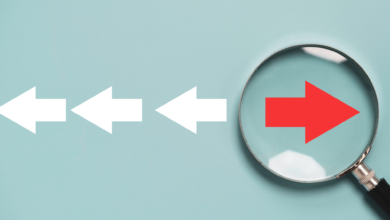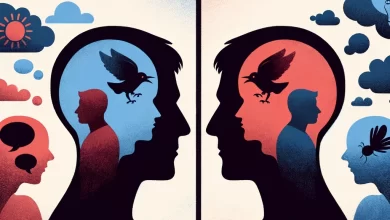Understanding Manic Depression: Symptoms & Help
Have you ever wondered what causes the unpredictable mood swings and extreme shifts in energy and activity levels associated with manic depression? Or how individuals affected by this complex mental illness can find the help they need to manage their symptoms and improve their quality of life? If so, this article is for you.
Bipolar disorder, commonly known as manic depression, is a fascinating yet challenging condition that affects millions of people worldwide. From the highs of mania to the lows of depression, the symptoms of bipolar disorder can be disruptive and overwhelming.
In this comprehensive guide, we will delve into the intricacies of bipolar disorder, explore the signs and symptoms, discuss the diagnosis process, discover the risk factors, and uncover various treatment options that can bring balance and stability to the lives of those affected by this disorder.
So, if you’re ready to unravel the mysteries of manic depression and gain valuable insights into this enigmatic condition, keep reading.
Key Takeaways:
- Manic depression, also known as bipolar disorder, involves unusual shifts in mood, energy levels, and activity levels.
- There are three types of bipolar disorder: Bipolar I disorder, Bipolar II disorder, and Cyclothymic disorder.
- Bipolar disorder is typically diagnosed in late adolescence or early adulthood, requiring lifelong treatment.
- The symptoms of manic and depressive episodes can vary, including changes in mood, energy, sleep patterns, and behavior.
- Bipolar disorder can be diagnosed through a combination of physical exams, medical tests, and mental health evaluations.
What is Bipolar Disorder?
Bipolar disorder, formerly known as manic-depressive illness or manic depression, is a mental illness characterized by clear changes in mood, energy, and activity levels. These changes range from periods of extreme “up,” or manic behavior, to periods of extreme “down,” or depressive behavior. Bipolar I disorder is defined by manic episodes lasting at least 7 days, while Bipolar II disorder involves depressive episodes and less severe hypomanic episodes. Cyclothymic disorder is characterized by recurring hypomanic and depressive symptoms. Rapid cycling refers to experiencing four or more episodes of mania or depression within a year.
Individuals with bipolar disorder may experience shifts in mood that can significantly impact their daily lives. These mood shifts can occur suddenly and unpredictably, making it challenging to maintain stable relationships and carry out ordinary tasks. The severity and duration of these episodes vary between individuals and can range from mild to severe.
Manic episodes:
During a manic episode, individuals may exhibit symptoms such as elevated mood, increased energy levels, racing thoughts, reduced need for sleep, and engaging in risky behaviors. They may feel a sense of euphoria, grandiosity, or an inflated sense of self-importance. Manic episodes can impair judgment and decision-making abilities, leading to consequences in personal and professional areas of life.
Depressive episodes: Depressive episodes are characterized by persistent feelings of sadness, hopelessness, loss of interest or pleasure in activities, changes in appetite and sleep patterns, and difficulty concentrating. Individuals may experience a lack of motivation, low energy levels, and thoughts of self-harm or suicide. Depressive episodes can significantly impact an individual’s quality of life and may require immediate intervention.
Hypomanic episodes: In Bipolar II disorder and cyclothymic disorder, individuals experience less severe hypomanic episodes. These episodes involve an elevated mood, increased energy levels, and heightened creativity and productivity. Hypomania is distinct from mania as it does not cause severe impairment in social or occupational functioning. However, hypomanic episodes can still disrupt daily routines and lead to impulsive or risk-taking behaviors.
Rapid cycling: Some individuals with bipolar disorder may experience rapid cycling, which refers to the occurrence of four or more mood episodes within a year. Rapid cycling can be challenging to treat and manage, requiring close monitoring and adjustment of treatment plans.
Bipolar Disorder Types Comparison
| Bipolar Disorder Type | Main Features |
|---|---|
| Bipolar I Disorder | Manic episodes lasting at least 7 days and often requiring hospitalization. May also include depressive episodes. |
| Bipolar II Disorder | Recurrent depressive episodes and less severe hypomanic episodes. |
| Cyclothymic Disorder | Recurring hypomanic and depressive symptoms that do not meet the full criteria for a manic or depressive episode. |
Signs and Symptoms of Bipolar Disorder
People with bipolar disorder experience periods of intense emotion and changes in sleep patterns, activity levels, and behavior.
During a manic episode, individuals may feel very up, high, elated, irritable, or touchy. They may have increased energy, decreased need for sleep, racing thoughts, and an excessive appetite for pleasurable activities.
On the other hand, during a depressive episode, individuals may feel very down, sad, indifferent, or hopeless. They may experience feelings of jumpy or wired, slowed down or restless, trouble sleeping, and decreased interest in activities.
Additionally, individuals with bipolar disorder may also encounter mood swings where they transition between manic and depressive episodes. These mood swings can happen suddenly and without warning.
Recognizing these symptoms is crucial for early intervention and proper management of bipolar disorder. If you or someone you know is experiencing these symptoms, it is important to seek professional help for an accurate diagnosis and comprehensive treatment plan.
Comparison of Manic and Depressive Symptoms
| Manic Episode | Depressive Episode |
|---|---|
| Feeling very up, high, elated | Feeling very down, sad, indifferent |
| Increased energy | Slowed down or restless |
| Decreased need for sleep | Trouble sleeping |
| Racing thoughts | Decreased interest in activities |
| Excessive appetite for pleasurable activities |
Understanding the signs and symptoms of bipolar disorder is essential for individuals, their families, and healthcare professionals as it aids in the diagnosis and effective management of this chronic condition.
Diagnosis of Bipolar Disorder
Bipolar disorder is a complex mental health condition that requires a comprehensive diagnostic process. Healthcare providers use a combination of physical exams, medical tests, and mental health evaluations to accurately diagnose bipolar disorder.
During the initial assessment, a healthcare provider will conduct a thorough mental health evaluation, taking into account the individual’s symptoms, experiences, and family history. This information helps determine if the person is experiencing the characteristic mood shifts associated with bipolar disorder.
In addition to the mental health evaluation, a physical exam may be performed to rule out any underlying medical conditions that could be contributing to the symptoms. This exam may involve checking vital signs, conducting blood tests, and evaluating the individual’s overall physical health.
While there are no specific medical tests that can definitively diagnose bipolar disorder, certain tests may be ordered to rule out other medical conditions or determine the presence of substances that could be affecting mood and behavior.
It is crucial to note that accurate diagnosis is particularly important in youth, as the symptoms of bipolar disorder can be mistaken for other mental health conditions or typical behavioral changes that occur during adolescence.
Furthermore, it is common for individuals with bipolar disorder to have co-occurring mental health disorders or conditions. These may include anxiety disorders, attention deficit hyperactivity disorder (ADHD), substance abuse, or eating disorders. Identifying and addressing these additional conditions is essential for comprehensive treatment.
In severe cases of bipolar disorder, individuals may experience psychotic symptoms, such as hallucinations or delusions, during manic or depressive episodes. These symptoms may require additional evaluation and treatment.
Risk Factors for Bipolar Disorder
Bipolar disorder is a complex mental illness with no known exact cause. However, there are several risk factors that can contribute to the development of this condition.
Family History
Having a family history of bipolar disorder can increase the likelihood of an individual developing the condition. Genetic factors play a role in the susceptibility to bipolar disorder, making individuals with close relatives who have been diagnosed with the disorder more at risk.
Stress
Experiencing periods of high stress can also contribute to the onset of bipolar disorder. High-stress situations, such as trauma, major life changes, or chronic stress, can trigger the manifestation of bipolar symptoms in susceptible individuals.
Drugs and Alcohol
The abuse of drugs and alcohol can significantly increase the risk of developing bipolar disorder. Substance abuse can disrupt brain chemistry, triggering mood swings and increasing the likelihood of experiencing manic or depressive episodes.
It is important to note that drugs and alcohol do not directly cause bipolar disorder, but they can exacerbate symptoms and make the condition more difficult to manage.
Medications and Medical Conditions
Certain medications, such as antidepressants or corticosteroids, have been linked to the triggering or worsening of bipolar symptoms in some individuals. Additionally, certain medical conditions, including thyroid disorders or multiple sclerosis, can increase the risk of developing bipolar disorder.
Understanding and Addressing Risk Factors
Identifying and understanding these risk factors is crucial for healthcare providers to assess an individual’s potential for developing bipolar disorder. By recognizing these risk factors, healthcare professionals can tailor treatment plans to address and minimize the impact of these factors. Early intervention and appropriate treatment can help individuals manage their symptoms and improve their overall quality of life.
Treatment for Bipolar Disorder
Treatment for bipolar disorder typically involves a combination of medication and psychotherapy. Medications commonly used include mood stabilizers, second-generation antipsychotics, and antidepressants. Psychotherapy, or talk therapy, can provide support, education, and guidance to individuals with bipolar disorder and their families. Self-management strategies, such as education and identifying early symptoms or triggers, can also be beneficial. Additionally, incorporating healthy lifestyle habits like exercise, yoga, and meditation can support treatment. In some cases, other therapies like electroconvulsive therapy (ECT) may be considered.
To learn more about the various treatment options available for bipolar disorder, visit the Mayo Clinic’s comprehensive guide on bipolar disorder treatment.
Types of Therapy for Bipolar Disorder
Different types of therapy can be highly beneficial in the treatment of bipolar disorder. These therapeutic approaches aim to provide support, education, and coping mechanisms for individuals with bipolar disorder and their families.
Psychoeducation
Psychoeducation is a form of therapy that helps individuals and their families learn about bipolar disorder and develop strategies for managing symptoms. It provides valuable insights into the condition, its triggers, and effective management techniques. By educating patients and their loved ones, psychoeducation empowers them to better understand and navigate the challenges associated with bipolar disorder.
Interpersonal and Social Rhythm Therapy
Interpersonal and social rhythm therapy focuses on establishing and maintaining stable daily routines, as well as improving sleep patterns. This therapy helps individuals with bipolar disorder regulate their circadian rhythms, which can have a significant impact on mood stability. By addressing sleep disturbances and promoting consistency in daily routines, this therapy aims to stabilize mood and reduce the risk of relapses.
Family-Focused Therapy
Family-focused therapy involves incorporating family members into therapy sessions to improve communication and problem-solving skills. Recognizing that bipolar disorder affects not just the individual but also their loved ones, this therapy aims to foster understanding, support, and collaboration within the family unit. By enhancing family dynamics and providing a supportive environment, family-focused therapy can contribute to improved treatment outcomes.
Cognitive-Behavioral Therapy (CBT)
Cognitive-behavioral therapy is a widely used therapeutic approach that helps individuals identify and change negative thought patterns and behaviors. With bipolar disorder, CBT can help individuals recognize triggers and early warning signs of mood episodes. By challenging negative thoughts and developing healthier coping strategies, CBT empowers individuals to effectively manage their condition and reduce the impact of mood swings on their daily lives.
These different types of therapy for bipolar disorder work together to provide a comprehensive approach to treatment. While medication plays a crucial role in managing symptoms, therapy can significantly enhance an individual’s ability to cope with mood swings and maintain stability.
| Therapy Type | Description |
|---|---|
| Psychoeducation | Provides education and strategies for managing symptoms. |
| Interpersonal and Social Rhythm Therapy | Focuses on improving sleep patterns and maintaining stable daily routines. |
| Family-Focused Therapy | Involves family members in therapy sessions to improve communication and problem-solving skills. |
| Cognitive-Behavioral Therapy (CBT) | Helps individuals identify and change negative thought patterns and behaviors. |
Medications for Bipolar Disorder
Medications play a crucial role in managing bipolar disorder. Different types of medications are utilized to address the various symptoms and aspects of the condition. It’s important to work closely with a healthcare provider to find the right medications and manage any potential side effects.
Mood Stabilizers
Mood stabilizers are a commonly prescribed class of medications for bipolar disorder. They help prevent and reduce the severity of mood episodes, promoting stability and balance. Examples of mood stabilizers include:
- Lithium
- Valproic acid
- Lamotrigine
Mood stabilizers help regulate mood swings and promote emotional stability. They are often the first line of treatment for bipolar disorder.
Neuroleptics (Second-Generation Antipsychotics)
Neuroleptics, also known as second-generation antipsychotics, are used to manage both manic and depressive symptoms in bipolar disorder. These medications work by modulating the levels of certain neurotransmitters in the brain. Examples of neuroleptics commonly prescribed for bipolar disorder include:
- Olanzapine
- Quetiapine
- Risperidone
Neuroleptics can help stabilize mood, reduce hallucinations and delusions, and alleviate symptoms of psychosis that may occur during severe manic or depressive episodes.
Antidepressants
Antidepressants may be prescribed alongside mood stabilizers for the treatment of depressive episodes in bipolar disorder. However, it is crucial that antidepressants are used in combination with mood stabilizers to prevent triggering a manic episode. Examples of antidepressants commonly used in bipolar disorder treatment include:
- Fluoxetine
- Sertraline
- Bupropion
Antidepressants help alleviate depressive symptoms, improve mood, and restore a sense of well-being. However, their use requires careful monitoring to ensure they do not induce manic episodes.
It’s important to note that medication management is individualized, and the specific medication regimen will vary depending on the unique needs and symptoms of each individual. Regular follow-up with a healthcare provider is essential to monitor the effectiveness of the medications and adjust the dosage as needed.
Side Effects and Other Treatment Options
When managing bipolar disorder, it’s important to be aware of the potential side effects associated with bipolar disorder medications. These side effects can vary depending on the specific medication prescribed. Some common side effects may include weight gain, metabolic dysregulation, drowsiness, and akathisia. It is crucial for individuals to discuss these potential side effects with their healthcare provider and report any concerns promptly.
In addition to medications, there are other treatment options available for bipolar disorder. These options may be recommended in cases where medication alone is not sufficient or when immediate control of symptoms is necessary.
One alternative treatment option is electroconvulsive therapy (ECT), which involves the use of electrical current to induce controlled seizures. ECT has proven to be effective and is often utilized for severe and treatment-resistant cases of bipolar disorder.
Another treatment option is transcranial magnetic stimulation (TMS), a non-invasive procedure that stimulates specific areas of the brain using magnetic fields. TMS has shown promise in treating depressive episodes associated with bipolar disorder.
For some individuals, thyroid medications may be prescribed as they can help stabilize mood and improve overall well-being. These medications work by regulating the production of thyroid hormones, which play a role in mood regulation.
Ketamine treatment is another emerging option for bipolar disorder. Ketamine is an anesthetic agent that has shown rapid and significant antidepressant effects. It is typically administered intravenously under medical supervision.
In severe cases where immediate intervention is necessary, hospitalization may be required. Hospitalization provides a structured and safe environment for individuals to receive intensive treatment and monitoring.
It’s important to note that the suitability of these treatment options may vary depending on individual circumstances. A comprehensive evaluation by a healthcare provider is crucial to determine the most appropriate treatment plan for each individual.
Conclusion
In conclusion, understanding and managing manic depression, also known as bipolar disorder, is vital for individuals affected by this condition. By recognizing the signs and symptoms, individuals can seek timely diagnosis and treatment to regain balance and improve their quality of life.
A comprehensive treatment plan that may include medication, therapy, and self-management strategies is essential for effectively managing bipolar disorder. Medications, such as mood stabilizers and antipsychotics, can help stabilize mood and reduce the severity of episodes. Therapy, such as psychoeducation and cognitive-behavioral therapy, can provide valuable support, education, and coping mechanisms.
While bipolar disorder is a lifelong condition, individuals can lead fulfilling lives with proper treatment and support. By understanding this complex mental illness and following a personalized treatment plan, individuals can effectively manage their symptoms and achieve stability. To learn more about understanding manic depression and the available bipolar disorder treatments, click here.






